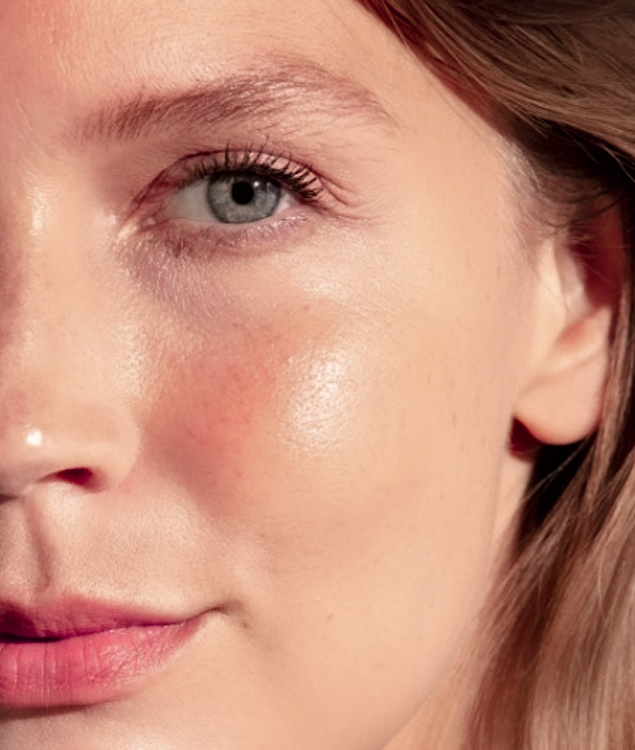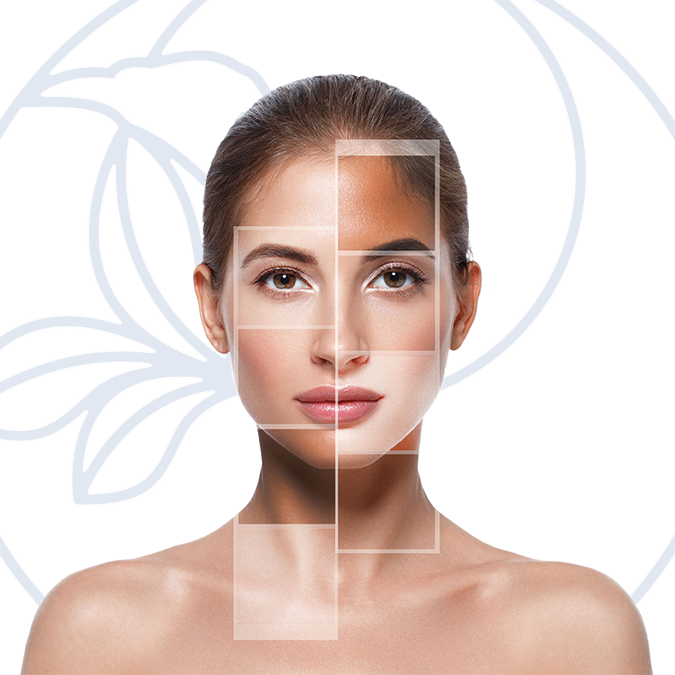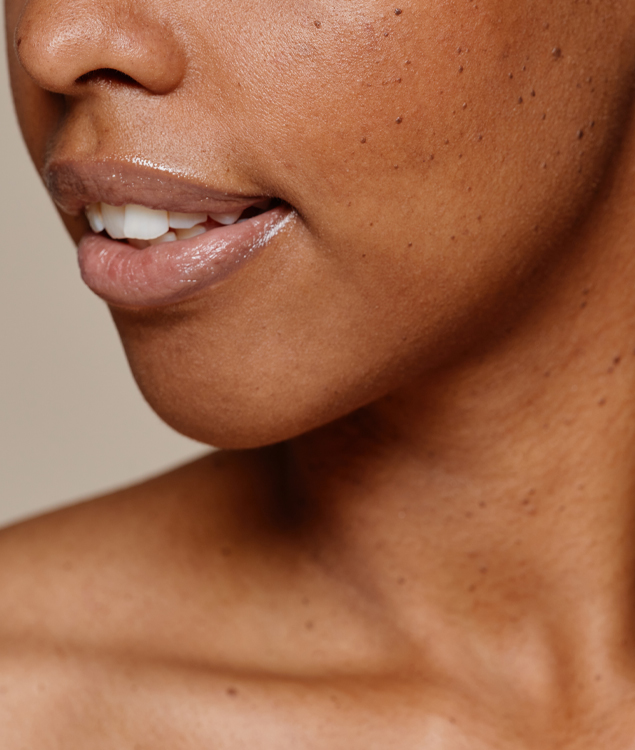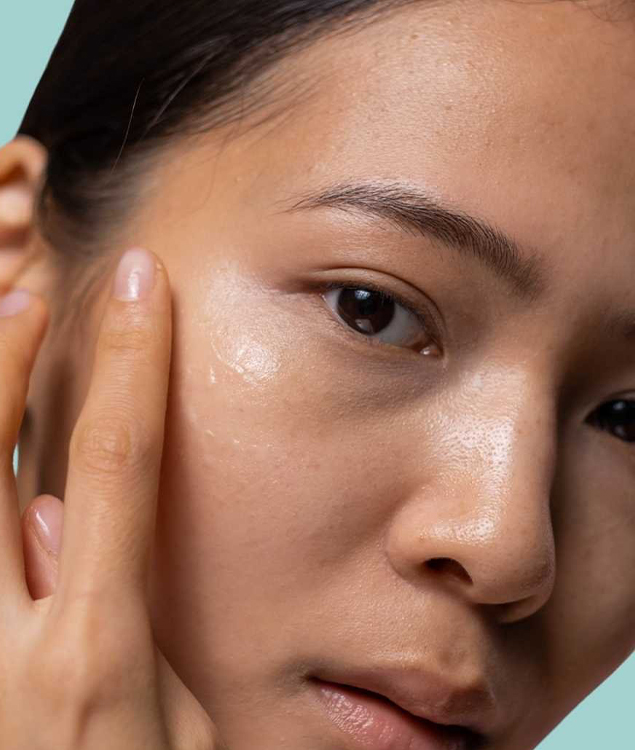
Oily Skin
Oily skin is a common skin type characterized by the overproduction of sebum, the natural oil produced by the skin. This excess oil can lead to a shiny appearance, enlarged pores, and an increased risk of acne breakouts.
Common Characteristics of Oily Skin:
- Shiny Appearance: Oily skin typically has a greasy look, especially in the T-zone (forehead, nose, and chin).
- Enlarged Pores: Excess oil can cause pores to become larger and more noticeable.
- Acne-Prone: Oily skin is more susceptible to acne due to clogged pores trapping bacteria.
- Makeup Longevity Issues: Makeup may slide off oily skin more easily than on other types.
Best Products for Oily Skin:
- Oil-Free Cleansers: Choose gentle cleansers formulated for oily skin to remove excess oil without stripping moisture.
- Salicylic Acid: This ingredient exfoliates and unclogs pores, making it ideal for oily and acne-prone skin.
- Oil-Free Moisturizers: Even oily skin needs hydration; opt for lightweight, oil-free moisturizers that won’t clog pores.
- Clay Masks: Use clay masks once or twice a week to absorb excess oil and clear clogged pores.
- Sunscreen: Protect your skin from UV rays with lightweight, non-comedogenic sunscreens.
- In conclusion, oily skin can be effectively managed with the right products and skincare routine. Look for oil-free formulations and ingredients like salicylic acid to control excess oil and prevent breakouts. Remember to moisturize daily and shield your skin from sun damage!
How to Test If You Have Oily Skin
- Wash your face with a gentle cleanser and pat dry.
- Wait about an hour without applying any products.
- Press a tissue on various areas of your face (forehead, nose, cheeks, chin).
- Check for visible oil spots on the tissue.
- Repeat the process in different areas to confirm if you have oily skin.
- If you see oil spots, you likely have oily skin.

Normal Skin
Normal skin is often considered the ideal skin type, striking a perfect balance between dry and oily. It features a smooth texture, even tone, and a healthy complexion. Individuals with normal skin typically have small, barely visible pores and minimal blemishes.
Recommended Products for Normal Skin:
Gentle Cleanser: Use a mild cleanser that removes impurities without stripping oils.
Lightweight Moisturizer: Choose moisturizers with hyaluronic acid or ceramides for hydration.
Sunscreen: Opt for broad-spectrum sunscreen to protect against UVA and UVB rays.
Exfoliators: Regular exfoliation encourages cell turnover for a fresh complexion.
Face Masks: Use hydrating or clarifying masks weekly to nourish your skin.
How to Test If You Have Normal Skin
- Visual Examination: In natural light, see if your complexion is even without redness or blemishes.
- Blotting Paper Test: Press blotting paper on your face. If it picks up little to no oil, you likely have normal skin

Dry Skin
Dry skin occurs when the skin lacks sufficient moisture and natural oils. It can affect anyone, especially in colder climates or during the winter months when humidity drops.
Common Characteristics of Dry Skin:
- Tightness: Feels tight after cleansing or exposure to dry air.
- Flakiness: Flaking or peeling skin due to dead cell accumulation.
- Itchiness: Dryness can cause itching, leading to further skin irritation.
- Dull Appearance: Lacks radiance, appearing dull or lifeless.
- Fine Lines: Fine lines and wrinkles may be more pronounced on dry skin.
Best Products for Dry Skin:
- Hyaluronic Acid: This humectant attracts moisture, hydrating and plumping skin.
- Ceramides: Strengthen the skin barrier and prevent moisture loss.
- Natural Oils: Use emollient oils like jojoba or argan oil for deep hydration.
- Glycerin: A moisturizer that draws water into the skin.
- Avoid Harsh Ingredients: Stay clear of alcohol-based products, which strip moisture.
- Incorporate these into your routine:
- Gentle Cleanser: A mild cleanser that effectively removes dirt without stripping oils.
- Hydrating Moisturizer: A rich moisturizer designed for dry skin to replenish moisture.
- Face Masks: Treat yourself to hydrating masks weekly for an extra moisture boost.
How to Test If You Have Dry Skin
- Wash your face gently with a mild cleanser and pat dry.
- Wait about 30 minutes without applying products.
- Observe for tightness, flakiness, or a dull look; these indicate dry skin.

Combination Skin
Combination skin features a blend of different skin types on various areas of your face. Typically, the T-zone (forehead, nose, chin) is oily, while the cheeks may be drier or normal.
Common Characteristics of Combination Skin:
- Oily T-Zone: Produces excess sebum, leading to shine and potential breakouts.
- Dry/Normal Cheeks: May feel tight or flaky due to less oil production.
- Enlarged Pores: Larger pores in the T-zone.
- Occasional Breakouts: Acne may occur more frequently in oily areas.
- Uneven Texture: Contrasting conditions create an uneven skin texture.
Best Products for Combination Skin:
- Gentle Cleanser: A mild cleanser that removes excess oil without drying out your skin.
- Lightweight Moisturizer: An oil-free or water-based moisturizer that hydrates without adding oil.
- Exfoliating Products: Gentle exfoliators to remove dead skin cells and unclog pores.
- Oil-Control Products: Use serums or toners with salicylic acid or witch hazel to manage oil in the T-zone.
- Sunscreen: Protect your skin with a broad-spectrum sunscreen.
- By optimizing your skincare routine for your specific skin type—oily, normal, dry, or combination—you can achieve healthier, more radiant skin. Always choose products that suit your skin’s unique needs for the best results!
How to Test If You Have Combination Skin
- Cleanse your face with a mild cleanser.
- Wait an hour without products.
- Observe your skin: oiliness in the T-zone and normal/dry cheeks indicate combination skin.
All SPIERVAH marketed products are in compliance with EU commission regulation on cosmetic products and registered in the Egyptian drug authority
SPIRO cosmetics was established in 2021 and is based in Egypt under tax registration number 642-925-534. All marketed SPIERVAH® products are based on natural and internationally recognized safe ingredients.
